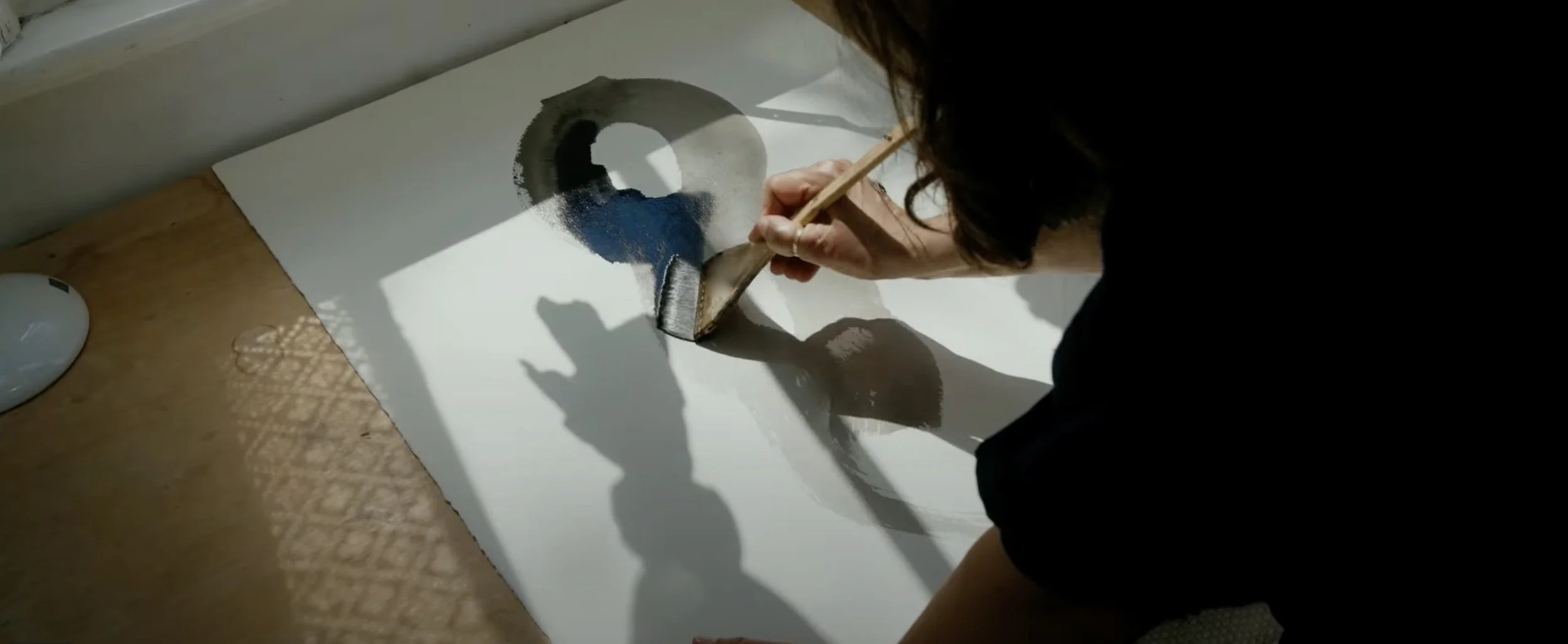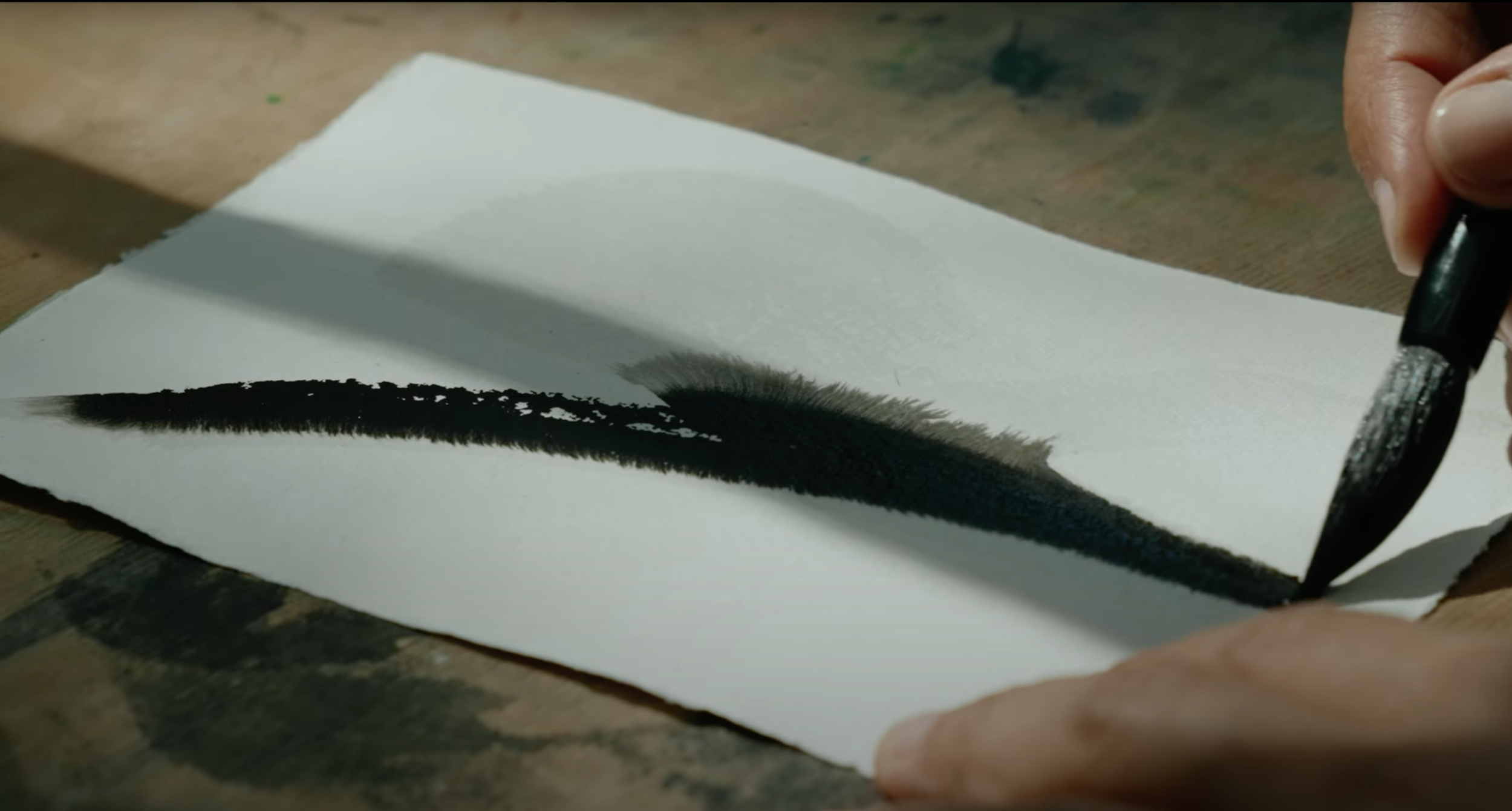sumi-e painting - Japanese ink
As a contemporary sumi-e artist and member of the International Sumi-e Association in Tokyo, Vivienne works with traditional Japanese ink painting techniques to explore the essence of natural forms. She has developed her own expression between abstraction and representation, using this medium to capture the evanescent quality of nature itself

About Sumi-e
For more than a decade, Vivienne has worked with sumi ink, fascinated by its depth and discipline. Her long-standing admiration for Japanese culture and its aesthetics has shaped her artistic path. More than an image in monochrome, sumi-e expresses the essence of its subject. It is not representative, more like a meditation — a search to capture life in just a few deliberate strokes.
Sumi-e, or Japanese ink painting, literally means “black ink painting” (sumi = black ink; e = painting). With the fewest possible strokes each movement records a moment of presence, merging research and spontaneity.
History and Tradition
The tradition of Japanese ink painting has its origins in China, where suiboku-ga (sui = water; boku = ink; ga = painting) developed during the Tang and Song dynasties. From this, a more immediate, expressive form emerged in Japan, where Zen Buddhist monks and scholars introduced sumi-e techniques in the 13th century. Sumi-e embraces simplicity and reduction. Understanding this deepens one’s appreciation of the philosophy rooted in observation, harmony, and mindfulness.
Contemporary Practice
Sumi-e painting remains an art form that bridges tradition with contemporary expression. It invites awareness to our environment and attention to the relationship between ink, water and paper.
In Vivienne’s practice, sumi ink has become a preferred medium, alongside paper sculpture and filmmaking, to explore her ongoing projects centred on nature, observation, and food plants. These works investigate the intricate connections between growth and transformation.
Since 2023, Vivienne has been a member of the International Sumi-e Association in Tokyo, an organisation dedicated to preserving and promoting both traditional and modern forms of ink painting. She is deeply honoured to have received two awards from the association for her work, and to have had a selection of her paintings exhibited in three consecutive years at the National Art Center in Tokyo.
Through sumi-e, Vivienne continues to explore the dialogue between what is visible and what can only be felt. For her, it is a discipline and a meditation: a quiet conversation with nature and time.




